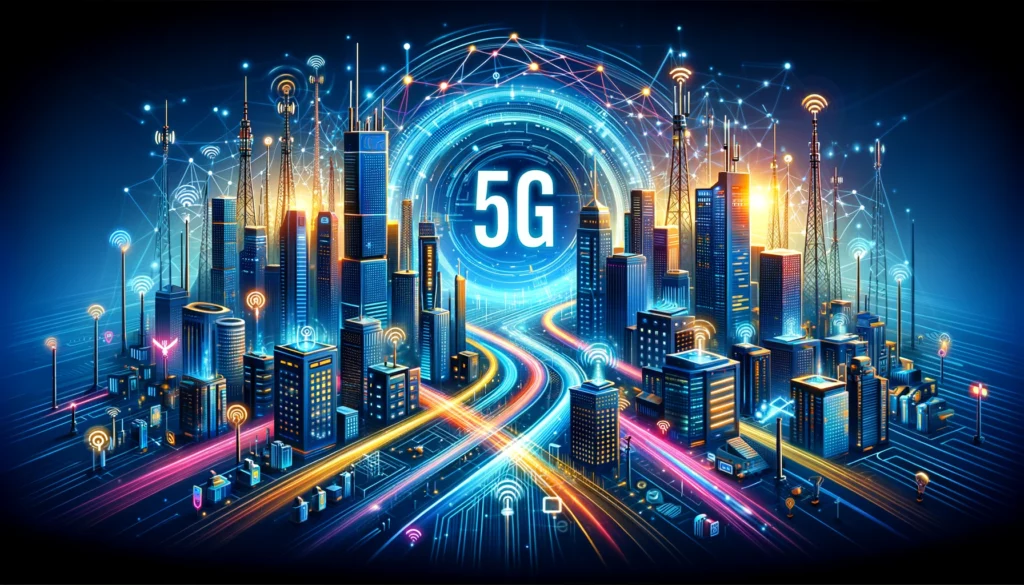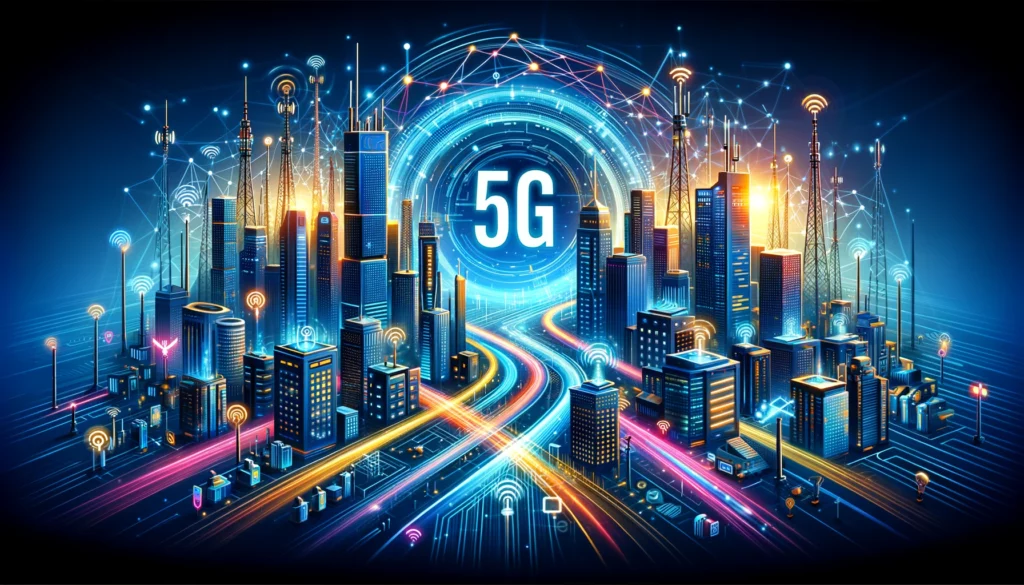
The continuous implementation of 5G wireless technology globally promises users significantly accelerated data speeds, exceptionally reliable connectivity, and broader cellular coverage.
Projections indicate that by 2028, North America is poised to boast a staggering 406 million 5G subscriptions.
However, amidst this swift expansion of 5G, what implications does it hold for mobile SEO? What adjustments are imperative for your SEO strategy to align with the advancements of this cutting-edge cellular network technology?
Let’s delve into these questions and uncover the answers.
A Quick Tour Of 5G Technology
5G represents the pinnacle of mobile internet and communication advancements, revolutionizing the speed, capacity, and efficiency of wireless networks.
With 5G, downloading movies, games, and hefty files takes mere seconds, surpassing the capabilities of its 4G predecessor with astonishing speeds of up to 1GB per second.
Yet, 5G isn’t solely about speed. It enables multiple devices to seamlessly connect to the network simultaneously without compromising performance.
This progress is particularly significant as we transition into an era where an increasing number of devices will rely on internet connectivity, spanning from smart home appliances to autonomous vehicles.
Additionally, 5G technology significantly slashes network latency to as little as one millisecond, a remarkable improvement from the 200-millisecond latency of 4G.
Put simply, there’s practically no delay when transmitting or receiving data.
This reduction in lag empowers 5G to deliver a seamless and responsive user experience, particularly within real-time applications such as online video games and video conferences.
In essence, 5G is poised to propel the online realm into a faster, more fluid, and interconnected state than ever before.
Now, what implications does this hold for the future of mobile SEO?
5G And The Future Of Mobile SEO
Here are the five key implications of 5G technology on SEO:
Emphasis on Speed:
The speed of a webpage significantly impacts user experience and has been a critical factor in Google’s ranking algorithm for mobile searches since 2018. With Google fully transitioning to mobile-first indexing by October 2023, the mobile version of your site holds utmost importance for rankings. Despite the introduction of 5G, the strategic advantage of optimizing your mobile site for speed remains unchanged. While 5G promises faster load times universally, the comparative speed of individual websites remains crucial. In a level playing field, the fastest-loading page will consistently prevail. Moreover, it’s essential to recognize that user expectations regarding page speed are likely to escalate with the advent of 5G. Users will soon grow accustomed to lightning-fast speeds and display little tolerance for slower-loading websites. Consequently, pages that fail to load swiftly, even with 5G, are poised to suffer from diminished user engagement and, consequently, poorer visibility in search engine results.
Enhanced Geolocation Precision:
With 5G networks offering superior geolocation accuracy compared to 4G, thanks to their utilization of higher frequency bands, denser network infrastructure, and advanced beamforming techniques, users can access more precise location-based information. Consequently, local SEO will ascend to a higher priority for businesses targeting local markets. Optimizing for local search entails maintaining a comprehensive and current Google Business Profile, focusing on pertinent location-specific keywords, and ensuring consistency of business contact information across online platforms.
Increased Focus on Rich Media:
A standout feature of 5G technology is its capability to seamlessly handle high-bandwidth content. This advancement allows websites to integrate more video content, high-resolution images, and interactive elements without encountering the performance issues commonly associated with 4G networks. Leveraging richer content formats opens avenues for heightened user engagement, thereby enhancing the ranking potential of websites. For instance, online retailers can offer 360-degree views of their products or interactive fitting rooms, enabling customers to virtually try on clothes using avatars. Similarly, science education websites can utilize augmented reality to illustrate complex biological processes vividly. As businesses refine their SEO strategies to include more immersive media formats, they must continue adhering to on-page optimization best practices to ensure search engines accurately interpret and index the content. This involves optimizing videos with precise titles, relevant tags, clear descriptions, and providing video transcripts.
Surge in Voice Search Adoption:
The proliferation of 5G is poised to substantially escalate the usage of voice search, primarily due to its enhanced speeds and diminished latency. Notably, there were 142 million voice-search users in the U.S. in 2022, with projections indicating a rise to 157 million by 2026. As more individuals embrace the convenience of mobile voice search, the nature of search queries is expected to evolve. Voice search queries typically exhibit greater length and conversational tone compared to typed searches. Consequently, SEO strategies will need to adjust to this shift in user behavior by prioritizing long-tail keywords and generating more question-oriented content that aligns with how people interact with voice assistants. It’s essential to note that many voice search responses are extracted directly from Featured Snippets, which furnish a direct answer to the user’s inquiry within the search results. Hence, ensuring that web pages incorporate comprehensive FAQ sections crafted in a natural, conversational manner is likely to optimize the chances of being featured or selected for voice search responses.
Technical SEO Considerations in the Era of 5G:
Server Response Times:
The emergence of 5G technology sets a new standard for website performance. Users accustomed to the swift speeds of 5G will exhibit little patience for slow-loading websites, elevating server response times to a pivotal factor in both user experience and SEO. A sluggish server response has the potential to act as a significant bottleneck, counteracting the speed benefits promised by 5G. э
Optimization Strategies:
To harness the full potential of 5G, optimizing server configurations becomes imperative. Employing Content Delivery Networks (CDNs) can substantially diminish latency by serving content from locations in close proximity to the user. Implementing efficient backend processing, such as streamlined database queries and optimized server-side scripting, can further enhance response times. Additionally, leveraging cloud-based solutions offers scalability and reliability, ensuring consistent performance even amidst surges in traffic.
Image Optimization in the 5G Era:
Despite the allure of high-resolution images in the age of 5G, it remains imperative to maintain a delicate balance between image quality and website performance. Flooding a site with large image files can still hinder loading times and degrade user experience.
Optimization Strategies:
The adoption of responsive images capable of adjusting to various screen sizes and resolutions is paramount. Embracing next-generation image formats like WebP and AVIF, which boast superior compression and quality compared to traditional formats such as JPEG and PNG, can markedly diminish file sizes without sacrificing visual integrity.
Progressive Web Apps (PWAs) in the 5G Landscape:
PWAs are poised to assume a central role in the 5G era, offering users an app-like experience coupled with the advantages of expedited loading times and enriched functionality. This seamless integration aligns perfectly with the capabilities of 5G, culminating in elevated mobile user experiences and, by extension, enhanced SEO benefits.
Optimization Strategies:
It is imperative to ensure that PWAs are not only discoverable but also indexable by search engines. This necessitates making the content within the PWA easily crawlable, alongside equipping the PWA with SEO-friendly features such as meta tags, structured data, and accessible URLs.
Final Thoughts
5G technology appears poised to revolutionize the approach businesses take towards their mobile SEO strategies. With faster upload and download speeds, increased connection capacity, and minimal latency, new possibilities emerge for dynamic and interactive online experiences.
The exciting aspect is that businesses can seize a competitive edge by proactively adjusting their mobile SEO strategies to align with this imminent shift.
Original news from SearchEngineJournal

